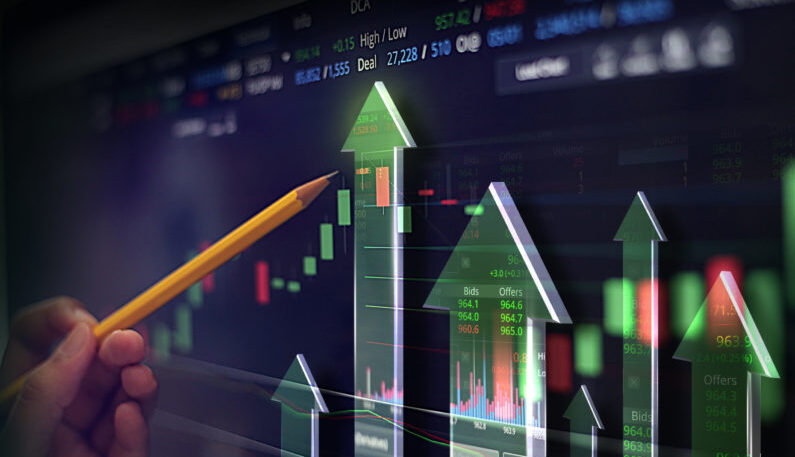European corporates gain €3.8bn from hedging as commodity prices soar

Hedges amassed in 2021 provide a €3.8bn relief to European automobile and consumer goods multinationals but that protection will fade as hedges expire and costs of new ones catch up with today’s prices
With the recent surge in commodity prices after Russia’s invasion of Ukraine, Nestle, BMW, VW and Anheuser-Busch are sitting on a market-to-market (mtm) gain of €3.8 billion from commodity hedges added last year, according to analysis of filings. The hedging gain removes some of the pain of an estimated €15 billion increase in raw material costs experienced by the companies.
These risk management actions by treasurers provided a much needed buffer to corporates as they deployed operational strategies including pricing, higher procurement, operating leverage and efficiencies programs to mitigate a sustained rise in input prices.
Hedging benefits
The end of the pandemic and Russia’s invasion of Ukraine has prompted an unprecedented surge in commodity prices, one which treasurers had not witnessed in years, prompting many to increase hedging in order to lock in prices of future raw material purchases. The extreme volatility had even disrupted markets, including the London Metals Exchange which is readily used by treasurers for hedging purposes
Hedging commodity risk is very important especially for raw material intensive users like manufacturers of automobile and consumer goods where price volatility can upset the profit margins of companies.
!function(){“use strict”;window.addEventListener(“message”,(function(e){if(void 0!==e.data[“datawrapper-height”]){var t=document.querySelectorAll(“iframe”);for(var a in e.data[“datawrapper-height”])for(var r=0;r<t.length;r++){if(t[r].contentWindow===e.source)t[r].style.height=e.data["datawrapper-height"][a]+"px"}}}))}();
Consider the Swiss food and drink conglomerate, Nestle which held notional commodity hedges worth CHF 2.55 billion (≈€2.45 billion) at the end of 2021, 190% or €1.6 billion higher than last year. These derivatives locked in prices of its future purchases of green coffee, cocoa beans, cereals and grains, which when expressed as a proportion of cost of goods sold equated to 5.6% in 2021.
“I think we did not [see] any impact of increased coffee bean prices in 2021 because we had hedging in place a little bit as well at the beginning of 2022. But this will disappear as we progress during the year, even if we have put new hedging in place. Clearly, there will be an increase of input cost inflation for coffee” said François Roger, CFO at Nestle.
Based on the current spot prices of commodities consumed by Nestle, EuroFinance estimates these hedges to yield a €493 million mtm gain.
Munich based- BMW, also followed suit with a 57% or €1.87 billion increase in notional hedges to €5.1 billion in 2021, sufficient to hedge 74% of raw material exposed to price changes in key metals including Aluminium, Copper, Nickel, Platinum and Palladium.
While the average price at which BMW locked in hedges has gone up by 56%, EuroFinance estimates the year-to-date mtm gain to be €1.18 billion
“Good news is that commodities are hedged to a very high degree for 2022.” said Nicolas Peter, CFO at BMW.
!function(){“use strict”;window.addEventListener(“message”,(function(e){if(void 0!==e.data[“datawrapper-height”]){var t=document.querySelectorAll(“iframe”);for(var a in e.data[“datawrapper-height”])for(var r=0;r<t.length;r++){if(t[r].contentWindow===e.source)t[r].style.height=e.data["datawrapper-height"][a]+"px"}}}))}();
Meanwhile, Volkswagen (VW), whose early bid to ramp up commodity hedging, yielded €1.4 billion in 2021, held €6.25 billion of notional hedges at the end of 2021, slightly lower than €6.5 billion last year.
These contracts locked in prices for key metals used for vehicle production including aluminium, copper, Nickel and are expected to result in a €921 million gain based on price moves this year
Amsterdam based- Stellantis, which was formed after a merger between Fiat Chrysler and PSA Peugeot last year, increased its notional hedges for metals including platinum, palladium and rhodium by threefold to €3.76 billion in December 2021, estimated to yield a €775 million mark to market gain this year.
Belgium based brewing company, Anheuser Busch increased its hedges by 33% or €500 million to €2 billion in 2021, which mainly included swap contracts to hedge aluminium, corn, wheat and energy.
As the price of agro commodities rallied, EuroFinance estimates the mtm gain to be €327 million since the start of the year
Despite higher expectations of rising material costs, Mercedes-Benz reduced its commodity hedging portfolio by 75% to only €57 million in 2021.
Although spot prices of hedged commodities are 20% higher than the purchase price, the gain will be immaterial to mitigate the rise in raw material costs.
A stopgap solution
Despite the mark to market gains, hedging is only a stopgap solution. As contracts expire, they will be replaced by new transactions struck at today’s high prices. Other tools for commodity risk management are necessary, such as supply chain or procurement, where corporates are deploying other operational strategies to fight inflation in the coming quarters.
For instance, sixty-percent of raw materials consumed by the Anglo-Dutch multinational, Unilever can’t be hedged using financial contracts due to an absence of liquid derivative contracts for those commodities. As hedges for the remaining 40% of exposures expire, the company has shifted focus towards pricing, procurement and saving.
While heading into 2022, the company ramped up procurement as it locked in prices of 90% of raw materials consumed in Q1, 70% in Q2 and 30% for the second half of the year. Despite these actions, management estimates a €3.6 billion commodity hit in 2022.
Meanwhile, automakers had already started hiking prices for vehicles in 2021, and further continue to build pricing momentum going forward.
“In 2021, we had a pretty significant lever on the pricing…which will also favour in 2022, [as we] will definitely continue to do so in 2022 on all fronts, I mean be it price escalation, but also carry on the lower discount level.” said Harald Wilhelm, CFO at Daimler